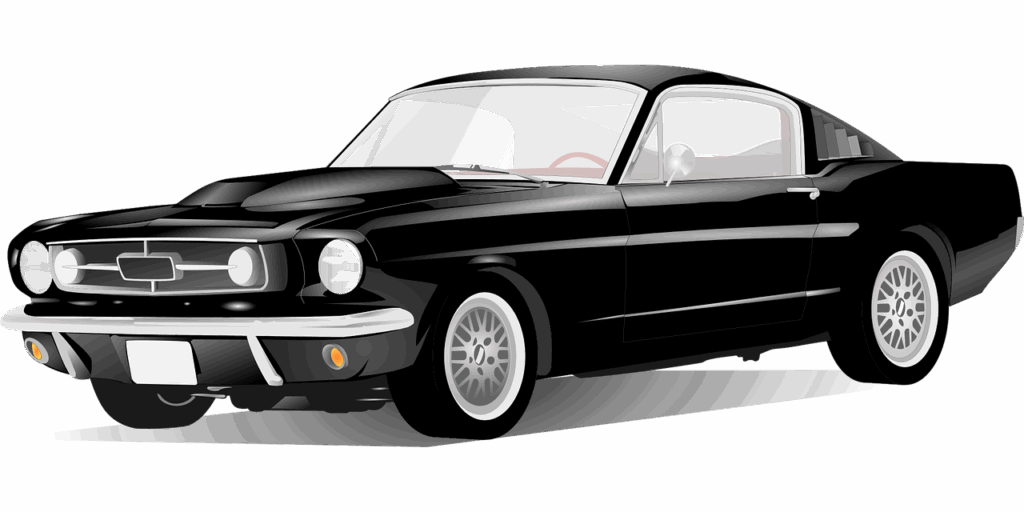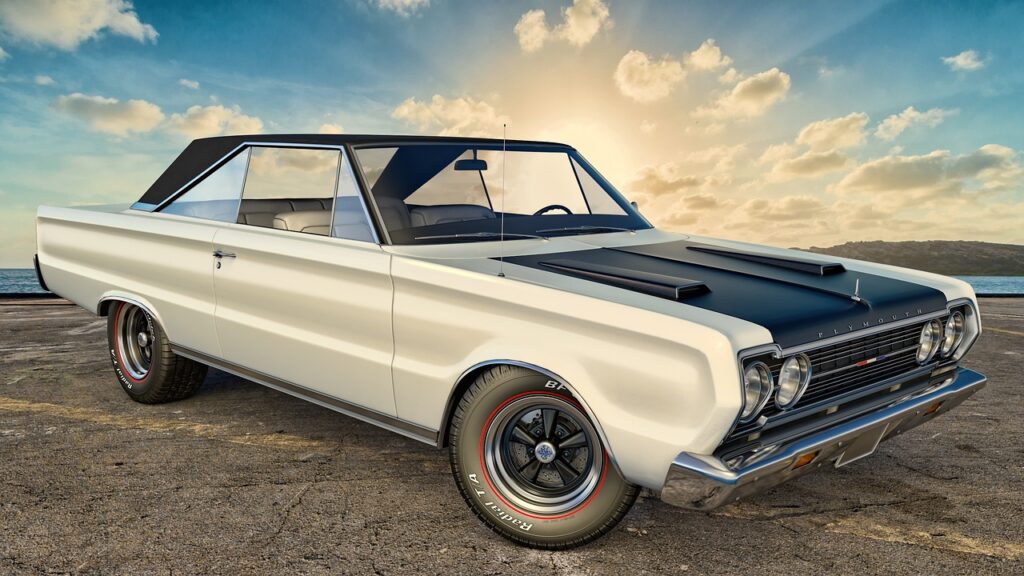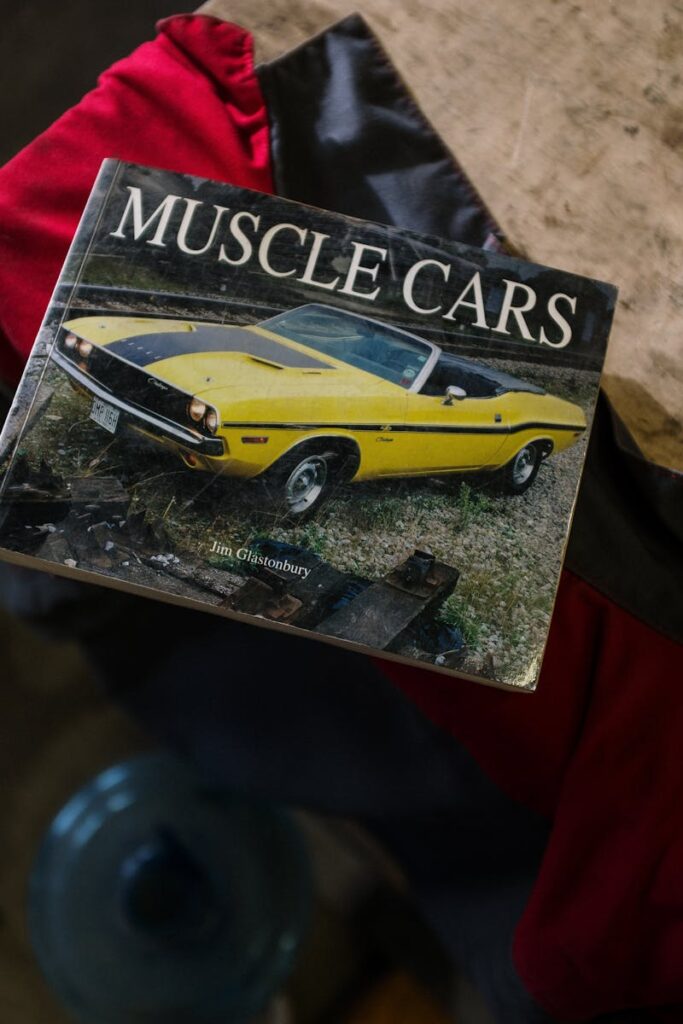
Muscle cars, without a doubt, form the very cornerstone of American performance vehicles. From the groundbreaking Pontiac GTO that ignited the segment to the raw, untamed power of the Dodge Challenger SRT Demon 170 — often hailed as the last true muscle car — the journey of powerful V8 engines and exhilarating torque has been nothing short of remarkable. It’s a legacy built on speed, design, and a uniquely American passion for the open road.
Over the years, automotive titans like Dodge, Chevrolet, Buick, Plymouth, and even the visionary Shelby, pushed boundaries, experimenting with and installing truly monstrous V8 engines into vehicles that have since become legendary. These aren’t just cars; they are artifacts of a bygone era, machines born from a desire for unadulterated power, now revered as some of the most rare and highly sought-after treasures in the automotive world. Their allure lies not just in their performance, but in their scarcity, making them subjects of fervent desire for collectors worldwide.
During the golden age of muscle, specifically the 1960s and 1970s, certain engine options came with staggering price tags. It wasn’t uncommon for these high-performance powerplants to cost more than the cars themselves, a testament to the advanced engineering and exclusivity involved. This formidable cost, coupled with their specialized nature, is precisely why many of these incredible vehicles were produced in extremely limited numbers, with some models seeing fewer than ten units ever made. What were once “expensive” propositions have now transcended into priceless collectibles, fetching millions at prestigious auctions. Join us as we take a closer look at some of the most desirable, and undeniably costly, classic American muscle cars that even seasoned collectors rarely encounter.
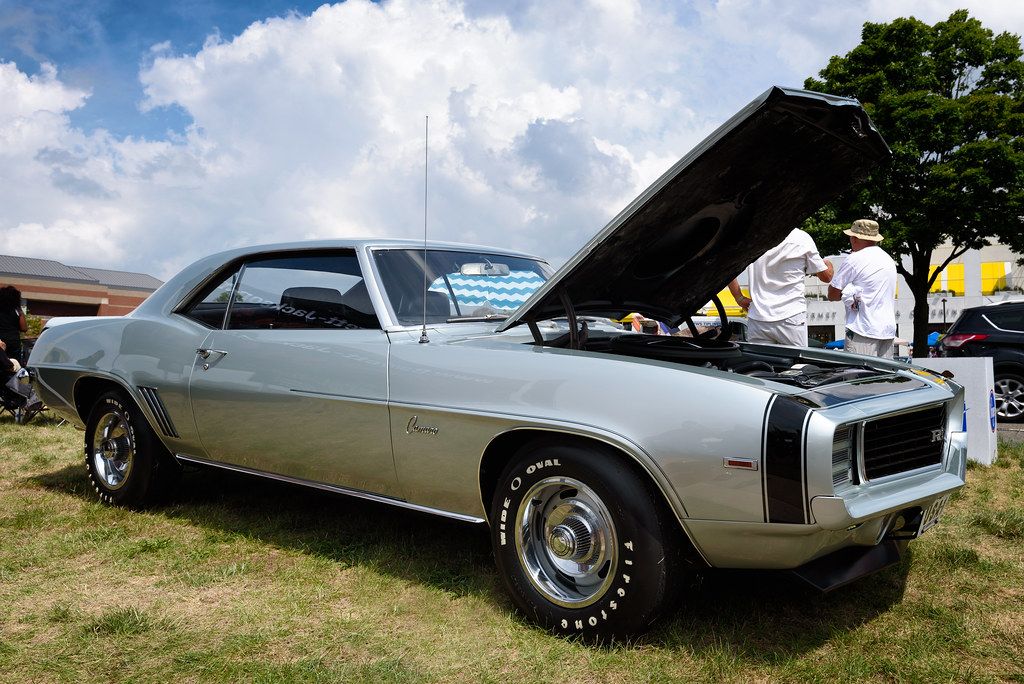
1. **1969 Chevrolet Camaro ZL-1**While the Camaro nameplate might feel a little more common today, the 1960s and 1970s told an entirely different story for this iconic machine. During that electrifying era, the Camaro stood tall alongside formidable competitors from Ford, Plymouth, Buick, and Dodge, firmly cementing its place as one of the most coveted performance cars in the vibrant American muscle scene. The 1969 Chevrolet Camaro ZL-1 didn’t just participate in this golden age; it truly epitomized its very pinnacle, a car that pushed the boundaries of what was possible.
Its exclusivity began with its production numbers, or rather, the lack thereof. With only 69 units ever produced, the ZL-1 was immediately elevated to an elite status, making it highly desirable from the moment it rolled off the assembly line. However, what truly propelled this Camaro into the annals of legend was not just its rarity, but its beating heart: a legendary 427 cubic-inch all-aluminum ZL-1 big-block V8. This powerhouse engine was originally developed with a singular purpose in mind – racing – ensuring it delivered uncompromising performance on any strip it graced.
The ZL-1 engine was a marvel of engineering, closely resembling the formidable L88 427 but featuring crucial enhancements, including a unique camshaft that provided slightly more lift and a shorter duration on the intake. This specialized setup contributed to its incredible output and raw power. The market has certainly recognized its legendary status; the most expensive 1969 Camaro ZL-1 ever sold commanded a staggering $1,094,500 at a Barrett-Jackson auction in 2020. This particular model, a ZL-1 COPO Camaro, was finished in a striking Hugger Orange paint and boasted a special ducted hood, making it an even more distinctive piece of muscle car history.
Car Model Information: 2023 Chevrolet Camaro 1LS
Name: Chevrolet Camaro
Manufacturer: Chevrolet
Production: 1966–2002,2009–2023
ModelYears: 1967–2002,2010–2024
Class: Pony car
BodyStyle: coupe,convertible
Platform: GM F platform,GM Zeta platform,GM Alpha platform
Layout: Front-engine, rear-wheel-drive layout
Categories: 1970s cars, 1980s cars, 1990s cars, 2+2 coupés, 2000s cars
Summary: The Chevrolet Camaro is a mid-size American automobile manufactured by Chevrolet, classified as a pony car. It first went on sale on September 29, 1966, for the 1967 model year and was designed to compete with the Ford Mustang. The Camaro shared its platform and major components with the Firebird, produced by General Motors’ Pontiac division that was also introduced for the 1967 model year.
Four distinct generations of the Camaro were developed before production ended in 2002. The nameplate was revived on a concept car that evolved into the fifth-generation Camaro; production started on March 16, 2009.
Production of the sixth generation of the Camaro ended in December 2023, for the 2024 model year.
Get more information about: Chevrolet Camaro
Buying a high-performing used car >>>
Brand: Chevrolet Model: Camaro
Price: $24,565 Mileage: 36,667 mi.
Read more about: The Elite Six: Modern Muscle Cars That Deliver Unapologetically Low Fuel Economy
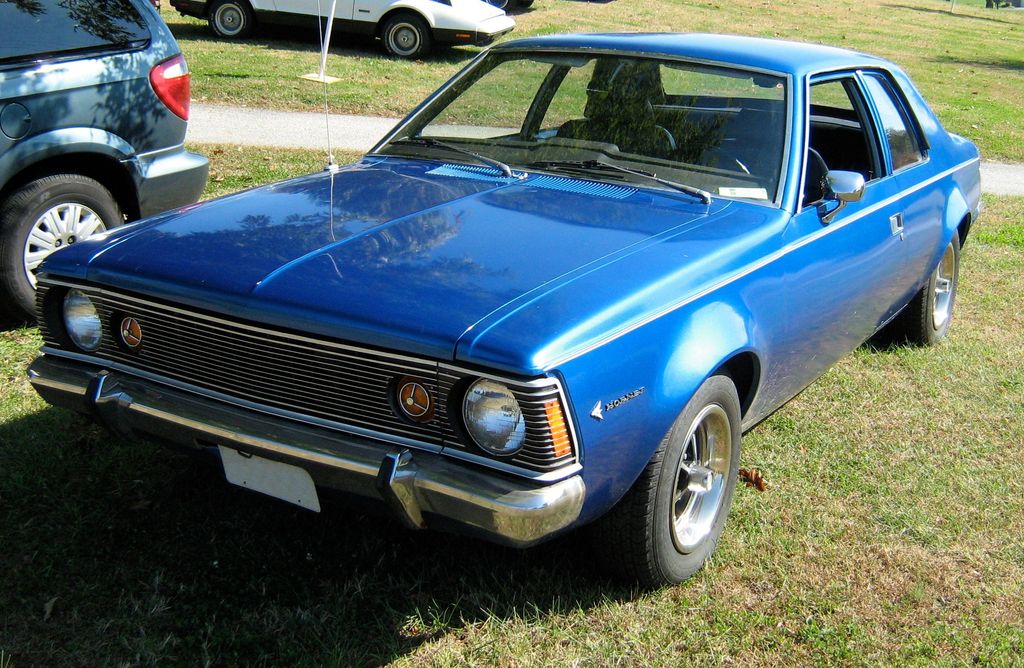
2. **1971 AMC “Matador Machine”**American Motors Corporation (AMC) carved out its own niche in the muscle car landscape, and the AMC Rebel Machine was a standout performer of the 1970s. Yet, its successor, the Matador, often remains relatively obscure, fading into the background of more famous names. This obscurity, however, only serves to amplify the rarity and allure of a very specific variant: the 1971 Matador equipped with the supremely sporty “Machine Go Package.” It’s a true hidden gem for those in the know, a testament to AMC’s often-overlooked engineering prowess.
Even without the special package, the Matador’s robust 6.6-liter V8 engine already packed a significant punch, capable of delivering impressive power. But the “Machine Go Package” took things several notches higher, transforming the Matador into a serious contender by significantly enhancing its performance credentials. This special upgrade introduced a suite of key components designed to optimize every aspect of the car’s drive, from its acceleration to its handling capabilities, proving AMC could compete with the best.
Among the crucial upgrades were a four-barrel carburetor for improved fuel delivery, front disc brakes for superior stopping power, and dual exhausts to let that V8 breathe and roar more freely. Wider tires, mounted on stylish 15-inch slot-style wheels, provided better grip, while a comprehensive handling package that included a rear sway bar ensured the Matador could corner with surprising agility. Only 68 AMC Matador Machines were produced in total, and according to Hagerty, an even more exclusive subset exists: just 24 of them came with a four-speed manual transmission, making those specific variants particularly rare and highly coveted among enthusiasts, pushing their value into rarified air.
Read more about: Beyond the Icons: Unearthing 12 Ultra-Rare Muscle Car Legends That Defined An Era

3. **1963 Chevrolet Impala Z11**The 1963 Chevrolet Impala Z11 was not merely a performance variant; it was an automobile engineered with a singular, high-octane purpose: drag racing. Chevrolet meticulously developed the Z11 model as a direct, no-compromise competitor to the formidable Ford Thunderbolt on the drag strip, signaling their intent to dominate the quarter-mile. Every modification and design choice was geared towards maximizing speed and acceleration, making it a true factory-built racer that left rivals in its dust.
This high-performance Impala introduced the Regular Production Option (RPO) Z11, a package that was nothing short of revolutionary for its time. It featured a monstrous Big-Block V8 engine with an extended stroke, designed for brutal power delivery. Complementing this potent block were a two-piece lifted aluminum intake manifold, dual four-barrel carburetors, and a completely redesigned intake system, all working in concert to force massive amounts of air and fuel into the engine. The compression ratio was cranked up to an astounding 13.5:1, firmly establishing it as an absolute powerhouse.
Weight reduction was another paramount focus for the Z11, illustrating Chevrolet’s commitment to competitive performance. To shed every conceivable excess pound, Chevrolet replaced numerous steel components with lightweight aluminum, including the fenders, bumpers, hood, brackets, grille, and braces. Furthermore, luxury and convenience items such as the radio, heater, sound-deadening materials, and even the front sway bar were all ruthlessly removed. These drastic changes collectively resulted in a substantial 300-pound weight reduction compared to a standard Impala, a crucial advantage on the drag strip. The historical significance of these vehicles is reflected in their market value; the most expensive 1963 Impala Z11 sold to date fetched a remarkable $524,000 at auction in 2017, a specific model that held the distinction of being the first serial-numbered RPO Z11 Impala ever built, driven by the legendary Dave Stickler.
Car Model Information: 2017 FIAT 124 Spider Lusso
Name: Chevrolet Impala
Caption: Fourth generation model (1967)
Manufacturer: Chevrolet
Production: 1957–1985,1994–1996,1999–2020
ModelYears: 1958–1985,1994–1996,2000–2020
Predecessor: Chevrolet Bel Air,Chevrolet Lumina#Second generation (1995–2001)
Successor: Chevrolet SS,Chevrolet Caprice
Platform: GM B platform,GM W platform,GM W platform (GMX211) (2005–2013),GM Epsilon platform#Epsilon II
Class: Full-size car,Mid-size car
Layout: Front-engine, rear-wheel-drive layout,Front-engine, front-wheel-drive layout
Categories: 1960s cars, 1970s cars, 1980s cars, 1990s cars, 2000s cars
Summary: The Chevrolet Impala () is a full-size car that was built by Chevrolet for model years 1958 to 1985, 1994 to 1996, and 2000 to 2020. The Impala was Chevrolet’s popular flagship passenger car and was among the better-selling American-made automobiles in the United States.
For its debut in 1958, the Impala was distinguished from other models by its symmetrical triple taillights. The Chevrolet Caprice was introduced as a top-line Impala Sport Sedan for model year 1965, later becoming a separate series positioned above the Impala in 1966, which, in turn, remained above the Chevrolet Bel Air and the Chevrolet Biscayne. The Impala continued as Chevrolet’s most popular full-sized model through the mid-1980s. Between 1994 and 1996, the Impala was revised as a 5.7-liter V8–powered version of the Chevrolet Caprice Classic sedan.
In 2000, the Impala was reintroduced again as a mainstream front-wheel drive car. In February 2014, the 2014 Impala ranked No. 1 among Affordable Large Cars in U.S. News & World Report’s rankings. When the 10th generation of the Impala was introduced for the 2014 model year, the 9th generation was rebadged as the Impala Limited and sold only to fleet customers through 2016. During that time, both versions were sold in the United States and Canada. The 10th-generation Impala was also sold in the Middle East and South Korea.
Get more information about: Chevrolet Impala
Buying a high-performing used car >>>
Brand: Chevrolet Model: Impala Z11
Price: $22,700 Mileage: 13,915 mi.
Read more about: The 11 Rarest Chevrolet Muscle Cars: Unearthing Iconic Powerhouses from the Golden Age to a ’90s Surprise
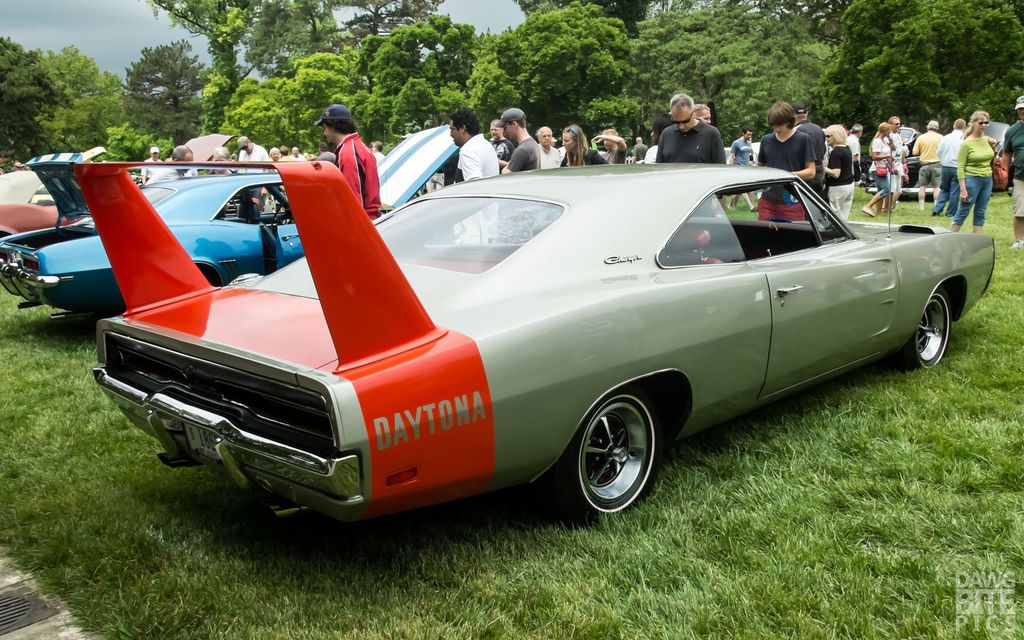
4. **1969 Dodge Charger Daytona With Four-Speed Manual**The original Dodge Charger Daytona is an undeniable icon, instantly recognizable by its radical, aerodynamic styling. Its production was limited to just one model year, an exclusivity that significantly contributes to its enduring rarity and immense desirability among collectors today. It was a car born from the desire to dominate NASCAR tracks, and its distinctive shape, featuring an elongated nose and an enormous rear wing, reflected that uncompromising pursuit of speed and stability at high velocities.
Of the 503 Daytonas manufactured in 1969, an exclusive subset truly stands out for enthusiasts seeking the ultimate blend of power and engagement. Only 70 of these winged warriors were fitted with the legendary, high-performance 426 HEMI V8 engine, a powerplant synonymous with Mopar muscle and known for its brutal torque. However, even within that already exclusive group, a much smaller, elite cadre emerged: just 22 units came equipped with the more engaging and highly sought-after four-speed manual transmission. This rare combination makes the manual HEMI Daytona a quintessential ’60s American muscle car, delivering an unparalleled and exhilarating driving experience that few have ever known.
The market value of these phenomenal machines reflects their legendary status and extreme scarcity. The most expensive Dodge Charger Daytona sold to date was a stunning copper-colored example that commanded an astonishing $1.43 million at a Mecum Auctions event in 2023. Prior to this record, another meticulously restored model, finished in Dark Green Metallic, also fetched an impressive $1.43 million. Intriguingly, this very Dark Green Metallic Daytona is now back on the market, creating a buzz among collectors and aiming to surpass its previous record, highlighting the sustained and fervent demand for these automotive masterpieces that continue to define the pinnacle of American muscle.
Moving further into the realm of the truly elusive, we now unveil a collection of muscle cars that represent the apex of scarcity. These are the near-mythical machines, produced in such vanishingly small numbers that they often elude even the most dedicated collectors. Get ready to discover unparalleled performance, breathtaking design, and record-breaking auction fortunes as we continue our journey into the deepest corners of muscle car history.
Car Model Information: 2017 FIAT 124 Spider Lusso
Name: Dodge Charger Daytona
Caption: 1969 Dodge Charger Daytona
Manufacturer: Dodge
Production: 1969–1970,2006–2009,2013,2017–2023
Class: Muscle car
Layout: FR layout
Categories: 1960s cars, 1970s cars, 2000s cars, All articles needing additional references, All articles with unsourced statements
Summary: Dodge produced three separate models with the name Dodge Charger Daytona, all of which were modified Dodge Chargers. The name was taken from Daytona Beach, Florida, which was an early center for auto racing and still hosts the Daytona 500, NASCAR’s premier event. The original Dodge Charger Daytona was designed to beat the competition in NASCAR racing. It was the first NASCAR vehicle to reach 200 miles per hour, which was a major milestone at the time.
The first use of the ‘Daytona’ name for a car was on a version of the Studebaker Lark. The Daytona was the performance model of the compact Lark, and it was produced during the 1960s.
Get more information about: Dodge Charger Daytona
Buying a high-performing used car >>>
Brand: Dodge Model: Charger Daytona
Price: $22,700 Mileage: 13,915 mi.
Read more about: Untamed Beasts: Unmasking the Most Dangerously Potent Muscle Cars Ever Unleashed on Public Roads
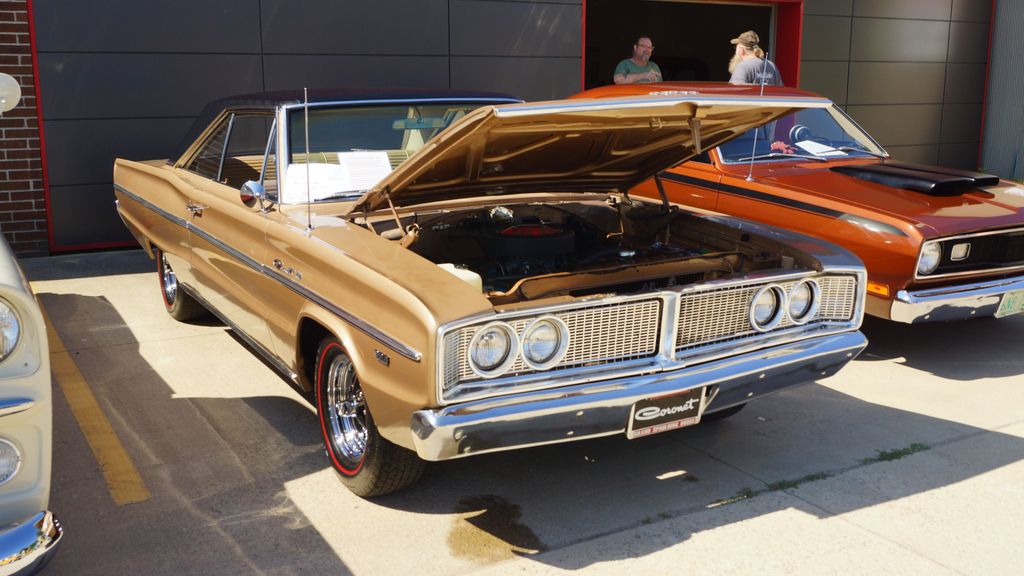
5. **1966 Dodge Coronet 440 Convertible**The Dodge Coronet, a classic example of American muscle, often found itself overshadowed by the sheer volume of V8-powered cars pouring out of Detroit during the fervent 1960s. However, Mopar, with its characteristic ingenuity, dramatically elevated the Coronet’s status by making available the optional 426 HEMI V8. This monstrous powerplant didn’t just add power; it transformed the seemingly ordinary Coronet into a veritable sleeper powerhouse, arguably marking Dodge’s very first true sleeper car and a testament to hidden might.
While a total of 738 units of the 1966 Coronet were indeed equipped with the formidable HEMI V8, the true rarity emerges when we narrow our focus to the convertibles—a mere twelve of them ever saw the light of day. Within this already exclusive dozen, Dodge further differentiated the offerings across two trim levels: the more luxurious Coronet 500 and the more Spartan Coronet 400. It is the Coronet 400, in its pure, unadorned form, that stands as the ultimate unicorn, with only six units ever produced, solidifying its place as one of the scarcest HEMI-powered convertibles of its vibrant era.
The market value of these incredible machines is a fascinating study in scarcity. According to Hagerty, the highest recorded sale for a Coronet Convertible HEMI was in 2017, when a Coronet 500 trim fetched $176,000 at an RM Sotheby’s auction. However, the even rarer Coronet 440 convertible models have appeared so infrequently at auctions that pinning down their definitive top market value remains a challenge. Given the unyielding demand for truly rare American muscle cars, there’s a strong consensus that a 440 model would command a significantly higher, potentially groundbreaking, price if one were to ever surface for sale.
Car Model Information: 1967 Dodge Coronet Restomod
Name: Dodge Coronet
Caption: 1967 Dodge Coronet R/T
Manufacturer: Dodge
Production: 1949–1959,1965–1976
Class: Full-size
Predecessor: Dodge Custom
Successor: Dodge Dart
Layout: FR layout
Categories: 1950s cars, 1970s cars, All articles with dead external links, All articles with unsourced statements, Articles with dead external links from June 2016
Summary: The Dodge Coronet is an automobile that was marketed by Dodge in seven generations, and shared nameplates with the same bodyshell with varying levels of equipment installed. Introduced as a full-size car in 1949, it was the division’s highest trim line and moved to the lowest level starting in 1955 through 1959. The name was reintroduced on intermediate-sized models from the 1965 until 1976 model years. Muscle car versions were available starting in 1965 with the 383 and 426 wedge cu in (7.0 L) Chrysler RB engine, followed in 1966 by the powerful 426 cu in (7.0 L) Chrysler Hemi. Other performance models included the “Superbee”, and featured, the 383 cu in (6.3 L) Magnum, among other engine options. The nameplate “coronet” is a type of crown worn by royalty.
In the 1980s, the Coronet was used on Dodge models marketed in Colombia.
Get more information about: Dodge Coronet
Buying a high-performing used car >>>
Brand: Dodge Model: Coronet
Price: $46,500 Mileage: 2,818 mi.
Read more about: Beyond the Drag Strip: The Definitive Guide to the Best Daily Driver Muscle Cars of the ’60s
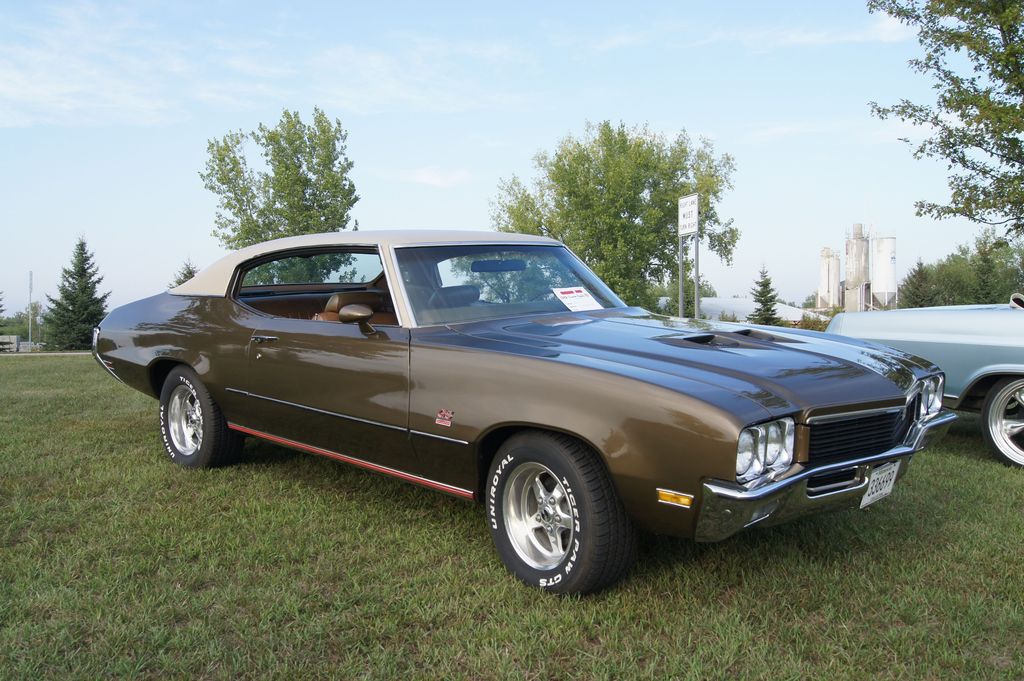
6. **1972 Buick GSX 455**The Buick GSX stands as a beautifully rounded muscle car, a rare gem that masterfully blended raw power with striking aesthetics, agile handling, and a surprising degree of comfort—qualities that were seldom found harmoniously together in the high-octane muscle cars of that era. Despite its formidable strengths and distinctive appeal, the GSX was produced in remarkably limited numbers from its inception, a scarcity that has only intensified its allure and value among discerning collectors as the years have passed.
While the 1971 model year already saw a mere 124 units built, it is the 1972 version that truly etches itself into the annals of rarity, with a production run totaling only 44 units. Within this already exclusive cohort, buyers in 1972 were presented with a choice of three engine options. Yet, the absolute rarest of them all was the potent 250-hp 455 V8-powered GSX, an engine choice found in just four units ever produced. Adding another layer of almost unimaginable exclusivity, a staggering single one of these four ultra-rare cars came equipped with a four-speed manual transmission, making it a truly singular piece of automotive history.
Given the almost mythical status of this ultra-rare 250-hp GSX, it’s not surprising that there are no known public auction records for it, leaving its true market potential a subject of excited speculation. However, other GSX models have certainly made their presence felt in collector circles. The most expensive 1972 Buick GSX sold to date was a 350 CI V8-powered variant, which commanded an impressive $90,200 at a Mecum Auctions event in 2021. Considering the steadily increasing demand for classic American muscle cars, it is more than just likely that if one of these elusive 250-hp GSX models were to ever grace an auction block, it would undoubtedly command a significantly higher, perhaps even record-shattering, price.
Car Model Information: 2017 FIAT 124 Spider Lusso
Name: Gran Sport
Logo: Buick gs emblem.png
Producttype: Performance car
Currentowner: General Motors
Producedby: General Motors
Introduced: [object Object]
Related: T-Type
Markets: U.S.
Categories: All Wikipedia articles in need of updating, All articles with unsourced statements, Articles with short description, Articles with unsourced statements from September 2020, Buick vehicles
Summary: The Gran Sport name has been used on several high-performance cars built by General Motors for its Buick brand since 1965. In the GM brands hierarchy, Buick was surpassed in luxury and comfort appointments only by Cadillac, which did not produce performance models. As a result, the Buick GS series were the most opulently equipped GM sport models of their era.
The Gran Sport performance enhancements on all Buick products during this era sought to affirm Buick’s tradition of producing powerful and comfortable products going back to the 1930s when all Buicks of the time were upgraded to the Buick Fireball Straight Eight, then installed the 278 cu in (4.6 L) Roadmaster engine in the shortest model Special and introduced the Century, known as “the banker’s hot rod” with a three speed synchromesh manual transmission. The Gran Sport sought to identify cars that were fun to drive with a luxury approach.
Get more information about: Buick Gran Sport
Buying a high-performing used car >>>
Brand: Buick Model: GSX 455
Price: $22,700 Mileage: 13,915 mi.
Read more about: Untamed Beasts: Unmasking the Most Dangerously Potent Muscle Cars Ever Unleashed on Public Roads
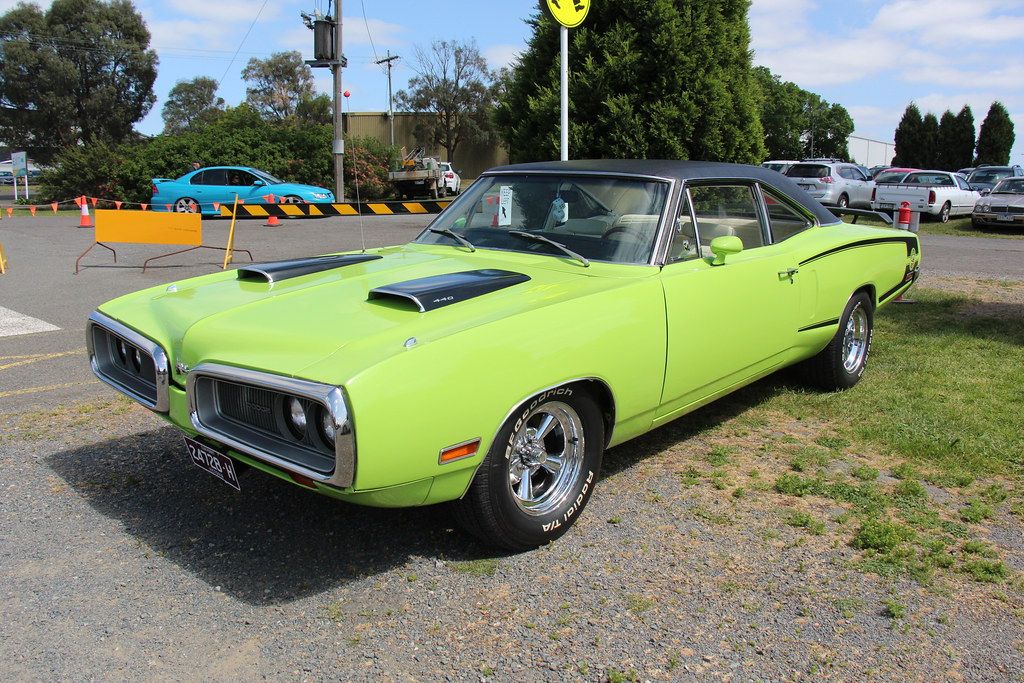
7. **1970 Dodge Super Bee 426 HEMI**The Dodge Super Bee emerged as a formidable and direct competitor to the popular Plymouth Road Runner, thoughtfully offering enthusiasts a more budget-friendly and characteristically stripped-down alternative to the more opulent Coronet R/T. Within the Super Bee’s vibrant, albeit brief, production history, the 1970 model year holds particular significance and immense appeal due to its staggering rarity, making it a true collector’s prize.
Out of the 3,650 two-door coupes sold in the U.S. during that year, an almost unbelievably minuscule number—just four—were factory-fitted with the legendary 426 HEMI V8 engine. Buyers in 1970 also had the option to select from two other powerful engines: a potent 335-hp 383 V8 and the robust 440 Six-Pack, but none could match the sheer brute force of the HEMI. Dodge also provided two transmission choices, a manual and an automatic, and recent auction results clearly indicate that the manual variant is the more fiercely sought-after of the two, commanding premium prices for its engaging driving experience.
While the 426 HEMI-equipped Super Bees remain largely unseen on the auction circuit, giving them an almost mythical status, the market has certainly recognized the value of its brethren. The most valuable 1970 Super Bee to date was a 440-equipped model, which impressively fetched $187,000 at a Mecum Auctions event. This particular car also featured the highly desirable 4-speed manual transmission, adding to its allure. However, automatic versions have also proven their worth, with a 383 V8-powered Super Bee selling for $110,000 through Mecum in 2022, underscoring the strong and consistent demand for this distinctive Mopar muscle.
Car Model Information: 2017 FIAT 124 Spider Lusso
Name: Dodge Super Bee
Manufacturer: Chrysler Corporation
Production: 1968–1971 , 1970–1980 (Mexico only) , 2007–2009 , 2012–2013
Layout: FR layout
Class: Muscle car
Caption: 1969 Dodge Coronet Super Bee A12 “Six Pack”
Categories: 1960s cars, 1970s cars, All articles needing additional references, All articles with dead external links, All articles with unsourced statements
Summary: The Dodge Super Bee is a mid-sized muscle car marketed by Dodge, that was produced for the 1968 through 1971 model years.
In Mexico, the Super Bee was based on a compact-sized Chrysler platform and marketed from 1970 until 1980.
The Super Bee model name was resurrected for the 2007, 2008, 2009, 2012, and 2013 Dodge Charger Super Bee models.
Get more information about: Dodge Super Bee
Buying a high-performing used car >>>
Brand: DODGE Model: SUPER BEE
Price: $22,700 Mileage: 13,915 mi.
Read more about: Beyond the Drag Strip: The Definitive Guide to the Best Daily Driver Muscle Cars of the ’60s
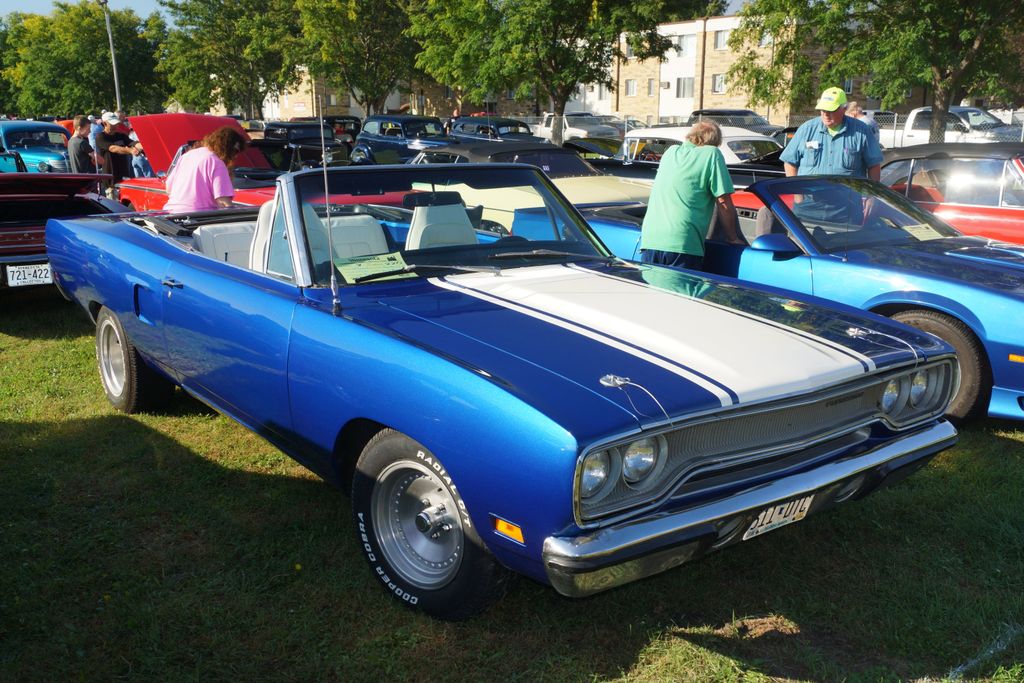
8. **1970 Plymouth Road Runner Convertible**The Plymouth Road Runner burst onto the scene in the late 1960s, quickly achieving major success and becoming an iconic symbol of no-frills, high-performance muscle. Yet, by 1970, sales had notably declined, a twist of fate that has, ironically, made the 1970 model exceptionally valuable in today’s collector market due to its sharply reduced production numbers. This year represents a fascinating pivot point, transforming a high-volume success into a low-volume treasure.
Even in their standard configurations, the convertible versions of the Road Runner were already considered rare, adding an immediate layer of exclusivity to these open-top cruisers. However, it was the HEMI-equipped variants that pushed the boundaries into true scarcity. According to Hagerty, an astonishingly low three 1970 Road Runner Convertibles with the legendary HEMI V8 were ever built and sold. And within that almost unbelievably small triumvirate, only a single one came equipped with the coveted 4-speed manual transmission, complete with its distinctive Pistol Grip shifter, making it a uniquely desirable and almost impossible-to-find automotive masterpiece.
The highest recorded auction price for a 1970 Road Runner Convertible was an impressive $214,500, a figure achieved at a Mecum Auctions event in 2013. Intriguingly, this record-setter was not even a HEMI model, but rather a potent 440-powered version fitted with an automatic transmission, hinting at the astronomical value a HEMI variant would command. A factory-original, HEMI-powered 1970 Road Runner Convertible has yet to appear at a major auction, making its potential sale an eagerly anticipated event. While a non-original 426 HEMI-powered Road Runner, featuring a Mopar 426 crate engine and an automatic transmission, did sell at Mecum for $93,500, it only further underscores the immense, untapped value of a truly pristine, original HEMI convertible.
Car Model Information: 2017 FIAT 124 Spider Lusso
Name: Plymouth Road Runner
Assembly: Detroit,Michigan
Manufacturer: Plymouth (automobile)
Class: Mid-size car
Production: 1968–1980
Related: unbulleted list
Layout: FR layout
Categories: 1970s cars, 1980s cars, All articles needing additional references, All articles with peacock terms, All articles with unsourced statements
Summary: The Plymouth Road Runner is a muscle car introduced by Chrysler in the United States for the 1968 model year and marketed under its Plymouth brand. Initially based on the Belvedere, the brand’s basic mid-size model, the Road Runner combined a powerful engine with a spartan trim level and a price that undercut increasingly upscale and expensive muscle cars such as the Pontiac GTO and Plymouth’s own GTX. It was initially a sales success.
The Road Runner was built in three generations on the mid-size B platform. Like most muscle cars, its performance and sales declined in the 1970s due to an increasing focus on fuel economy and the adoption of more stringent U.S. emission standards. The nameplate became to a trim package for the compact Plymouth Volaré for model year 1976—no longer offering any special performance capability—and was discontinued in 1980.
Get more information about: Plymouth Road Runner
Buying a high-performing used car >>>
Brand: Plymouth Model: Road Runner
Price: $22,700 Mileage: 13,915 mi.
Read more about: Untamed Beasts: Unmasking the Most Dangerously Potent Muscle Cars Ever Unleashed on Public Roads
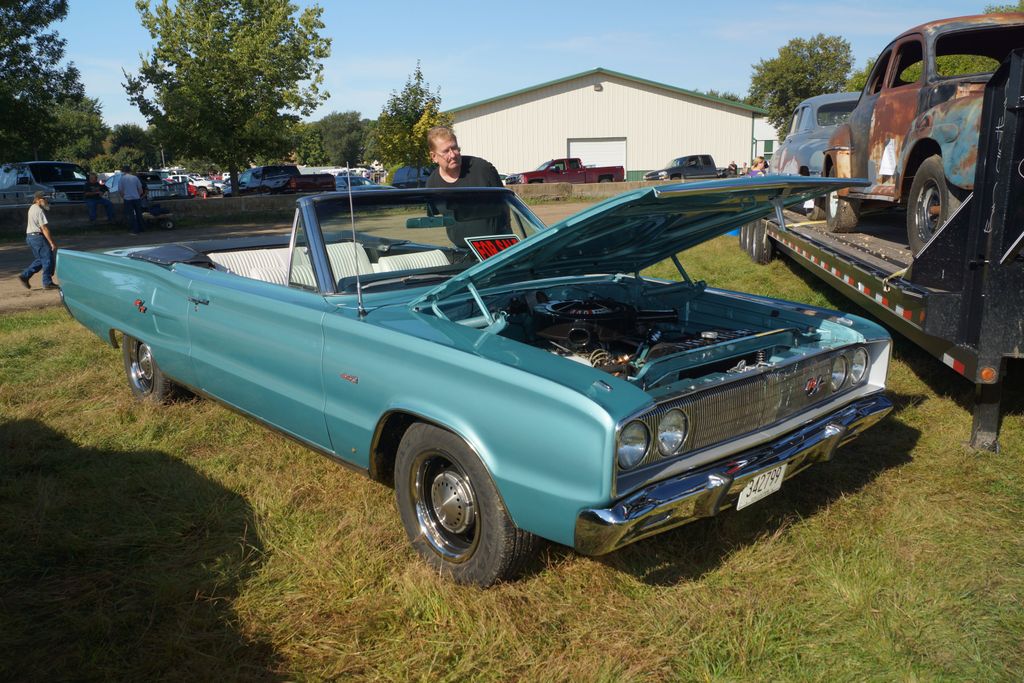
9. **1967 Dodge Coronet R/T Convertible**In a bold and direct effort to go head-to-head with formidable competitors such as the Pontiac GTO and the Chevrolet Chevelle SS, Dodge unleashed the Coronet R/T in 1967. This performance-oriented model was immediately recognizable, standing out with its aggressive hood scoops and distinctive badging, all artfully reinforcing its unyielding, aggressive stance on the road. It was a clear statement of intent from Dodge: they were here to compete at the highest level of muscle.
The absolute highlight of its powerful powertrain options was the legendary and utterly formidable 426 HEMI V8, an engine renowned for its brutal power, which produced an impressive 425 horsepower. At the time, this potent engine upgrade was offered as a $457 option, a sum roughly equivalent to $4,500 in today’s currency, making it a significantly costly addition to an already premium car. As a direct result of this formidable price tag, only three Coronet R/T Convertibles were ever equipped with the revered HEMI engine, cementing their extreme rarity from day one.
Among these three incredibly scarce examples, one was meticulously fitted with a smooth 3-speed automatic transmission, while the other two, catering to the most ardent driving purists, came equipped with a more engaging 4-speed manual gearbox. The most valuable ’67 HEMI Coronet R/T Convertible sold to date was one of these manual-equipped examples, which commanded a remarkable $220,000 at a Mecum Auctions event. While Hagerty currently values a Concours Condition example at $260,000, it is highly likely that future sales will significantly surpass this figure, especially considering that the existing record-setting auction occurred way back in 2016, a lifetime ago in the fast-paced world of collector car values.
Car Model Information: 2017 FIAT 124 Spider Lusso
Name: Dodge Coronet
Caption: 1967 Dodge Coronet R/T
Manufacturer: Dodge
Production: 1949–1959,1965–1976
Class: Full-size
Predecessor: Dodge Custom
Successor: Dodge Dart
Layout: FR layout
Categories: 1950s cars, 1970s cars, All articles with dead external links, All articles with unsourced statements, Articles with dead external links from June 2016
Summary: The Dodge Coronet is an automobile that was marketed by Dodge in seven generations, and shared nameplates with the same bodyshell with varying levels of equipment installed. Introduced as a full-size car in 1949, it was the division’s highest trim line and moved to the lowest level starting in 1955 through 1959. The name was reintroduced on intermediate-sized models from the 1965 until 1976 model years. Muscle car versions were available starting in 1965 with the 383 and 426 wedge cu in (7.0 L) Chrysler RB engine, followed in 1966 by the powerful 426 cu in (7.0 L) Chrysler Hemi. Other performance models included the “Superbee”, and featured, the 383 cu in (6.3 L) Magnum, among other engine options. The nameplate “coronet” is a type of crown worn by royalty.
In the 1980s, the Coronet was used on Dodge models marketed in Colombia.
Get more information about: Dodge Coronet
Buying a high-performing used car >>>
Brand: Dodge Model: Coronet R/T
Price: $22,700 Mileage: 13,915 mi.
Read more about: Beyond the Drag Strip: The Definitive Guide to the Best Daily Driver Muscle Cars of the ’60s
As we bring this deep dive into the rarest of American muscle cars to a close, it’s clear that the allure of these machines goes far beyond their powerful engines and striking designs. Their scarcity elevates them to legendary status, transforming them from mere vehicles into priceless artifacts of automotive history. Each one tells a story of innovation, audacious engineering, and a relentless pursuit of performance that, for various reasons, resulted in incredibly limited production. These are not just cars; they are elusive dreams, whispered legends, and the ultimate prizes for those fortunate few who manage to track down a true unicorn of the muscle car world. Their market value continues to soar, reflecting their unique place in the hearts of enthusiasts and the annals of motoring. To encounter one of these magnificent beasts is to witness history in motion, a testament to an era when American power reigned supreme, and rarity became the ultimate badge of honor.


